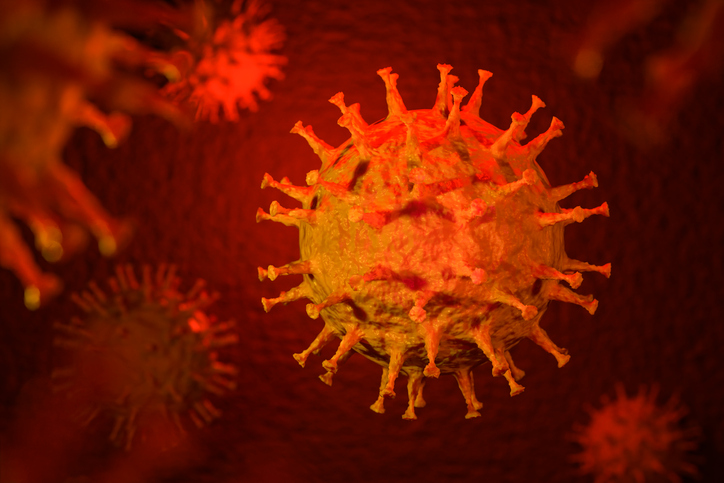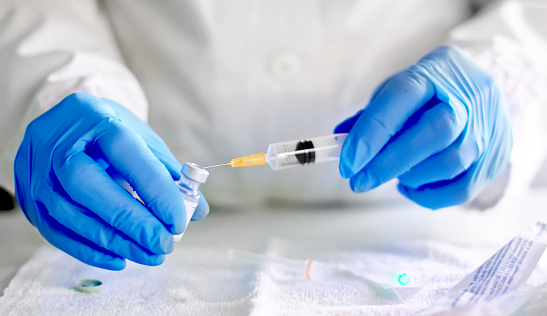The United States has declared a public health emergency in response to the novel coronavirus (COVID-19) outbreak. Researchers from the Centers for Disease Control and Prevention (CDC) are monitoring the outbreak but expect cases to grow in the United States. The CDC recommends you prepare for the spread of the virus and know what coronavirus symptoms to watch for.
What is Coronavirus (COVID-19)?
Coronaviruses are a family of viruses that can cause mild illness like the common cold to more severe diseases like Middle East Respiratory Syndrome (MERS) or Severe Acute Respiratory Syndrome (SARS), according to the World Health Organization (WHO).
A novel coronavirus is a new coronavirus strain that hasn’t been previously identified in humans. Coronaviruses are transmitted between animals and humans.
How is Coronavirus Spread?
Because COVID-19 is a new virus, experts are still learning exactly how it’s spread. They do, however, know it spreads from person to person via close contact (within 6 feet) of an infected person. The virus spreads through respiratory droplets when an infected person coughs or sneezes.
Though it’s possible to contract the virus by touching a surface with the virus on it and then touching your mouth, nose or eyes, this is not thought to be the main way it spreads. To decrease your risk of contracting the virus, health organizations recommend regularly washing your hands with soap and water for at least 20 seconds. If you don’t have access to soap and water, use an alcohol-based hand sanitizer with at least 60% alcohol.
What are the Symptoms of Coronavirus?
Symptoms for COVID-19 have ranged from mild illness to more severe symptoms, according to the CDC. Common symptoms that usually appear within two to 14 days after exposure usually include:
- Fever
- Cough
- Shortness of breath
The WHO reports that the most common symptoms of coronavirus are fever, a dry cough and tiredness. The organization also notes that some people may experience muscle aches, diarrhea, runny nose or nasal congestion, or sore throat.
The WHO notes that older adults or those with underlying medical conditions like high blood pressure, heart problems or diabetes are more likely to develop serious illness, which can include difficulty breathing.
If you develop a fever, cough or shortness of breath, seek medical attention.
How Likely Am I to Catch Coronavirus?
If you’ve been keeping up with the news, it seems like fear about the coronavirus is spreading quicker than the virus itself. According to the WHO, the United States has 62 reported cases of COVID-19 as of March 2.
So, how likely are you to catch COVID-19? Your risk depends on where you live and where you have traveled, according to WHO. If you do not live in an area where several people have been diagnosed or have traveled to an area where an outbreak is active, your risk of contracting the virus is low.
How to Protect Yourself
Aside from following the handwashing recommendations, WHO suggests:
- Maintain a distance of at least 3 feet from a person who is coughing or sneezing
- Avoid touching your eyes, nose or mouth
- Cough or sneeze into your elbow or a tissue, rather than your hand
- Stay home if you feel unwell
- Stay informed of the latest COVID-19 developments from health organizations like the CDC, WHO and your local health departments.
And those masks you’ve probably seen people wearing? Don’t waste your money, says the U.S. Surgeon General. Face masks should be reserved for those who are actively ill or those or are caring for a sick person. Simply wearing a mask while you’re in public won’t provide any benefit.
Kendal at Home is staying updated on the latest developments and working closely with all Home Care providers to be sure proper infection control procedures are being followed. Kendal at Home encourages all members to make sure they have had their flu shots. The flu shot will not protect you from the coronavirus, but the risk from influenza is still quite high.
For reliable and up to date information visit: https://www.cdc.gov/coronavirus/2019-ncov/index.html or https://www.who.int/













